We all know that eating salads is healthy for us, but do you know all the different types of lettuce you can use? Furthermore, did you realize that some types of lettuce are healthier than others?
To determine the most nutritious greens, we looked at a Centers for Disease Control report that ranked 47 "powerhouse fruits and vegetables" according to nutrient density. These powerhouse lettuce types had to meet two qualifications: they're the foods most strongly associated with reduced chronic disease risk and one 100-calorie serving had to contain 10% or more daily value of 17 qualifying nutrients.
Iceberg Lettuce
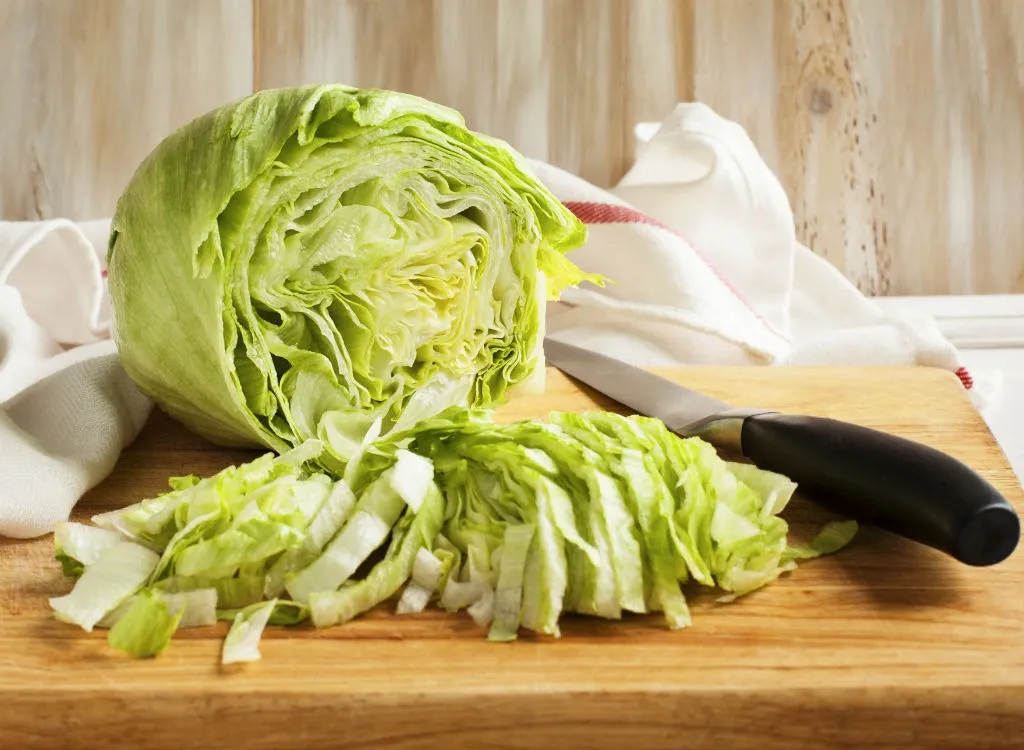
Nutrition Score: 18.28
The worst of all the types of lettuce in terms of nutrition is unsurprisingly iceberg lettuce. While great on burgers, this lettuce is mostly made up of water and should be reserved to add a signature crunch to dishes—never the star of the show.
Cabbage
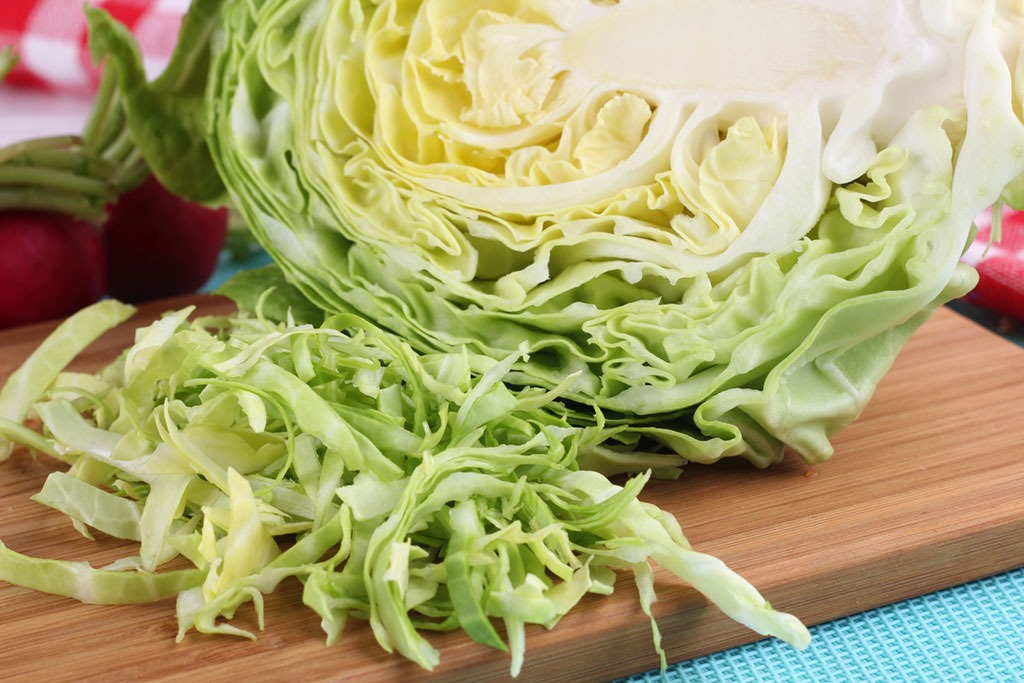
Nutrition Score: 24.51
Cabbage is considered a type of lettuce, but it's also part of the cruciferous family, which contains potent compounds that have been linked to reducing the risk of cancer. Use this in slaws, sautees, and stir-fries.
Arugula
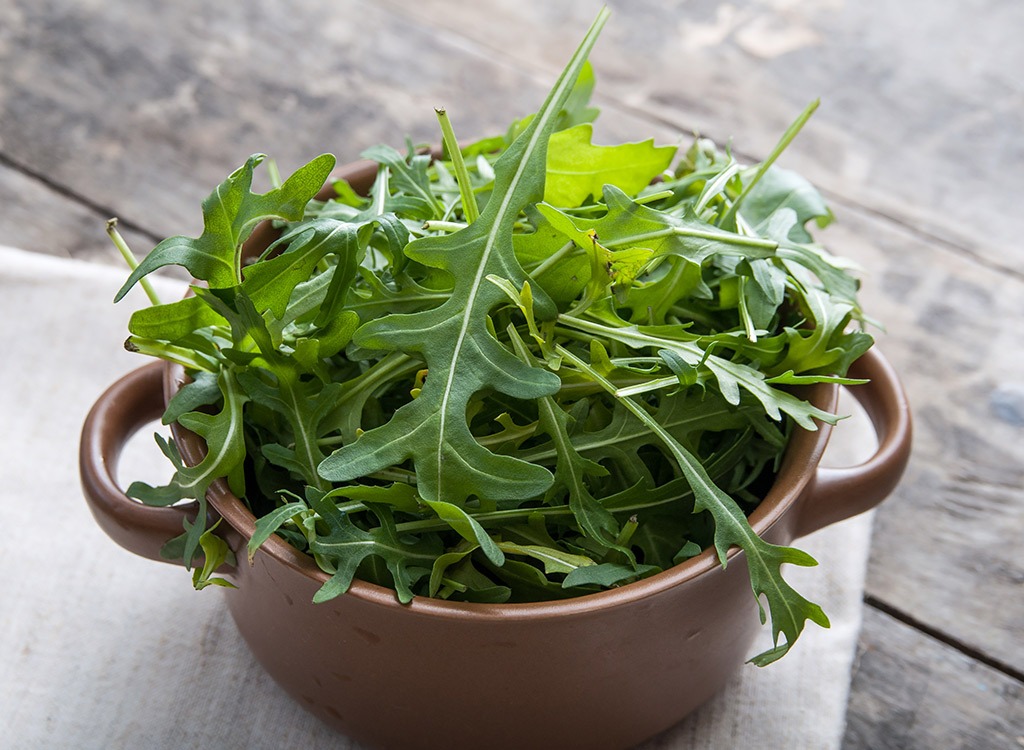
Nutrition Score: 37.65
Often offering a peppery flavor to salads, arugula is one of the more common types of lettuce. While not necessarily the most nutritious, it's the perfect base for quinoa and cranberry salads, paired with shaved parmesan and champagne vinegar dressing, and layered with fresh citrus.
Dandelion Green
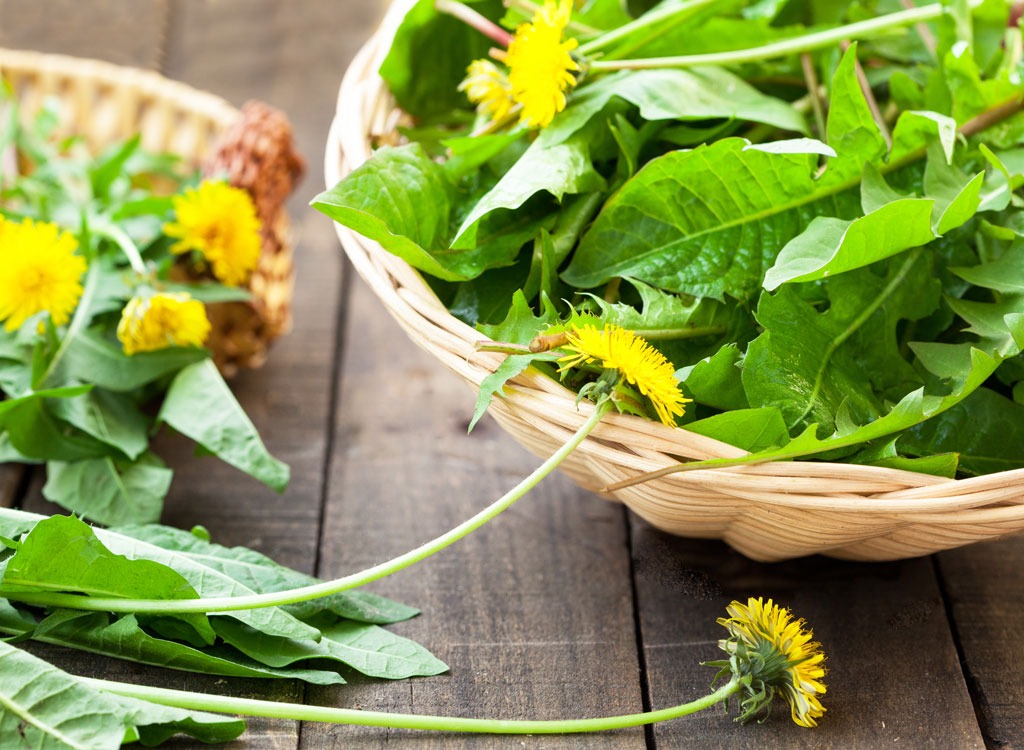
Nutrition Score: 46.34
While typically found in teas, dandelion greens are one of the most unknown types of lettuce. They're a natural diuretic, have a higher calcium content than kale, and are loaded with iron and vitamin K. With their bitter taste profile, balance them out with neutral greens like spinach or romaine.
Kale
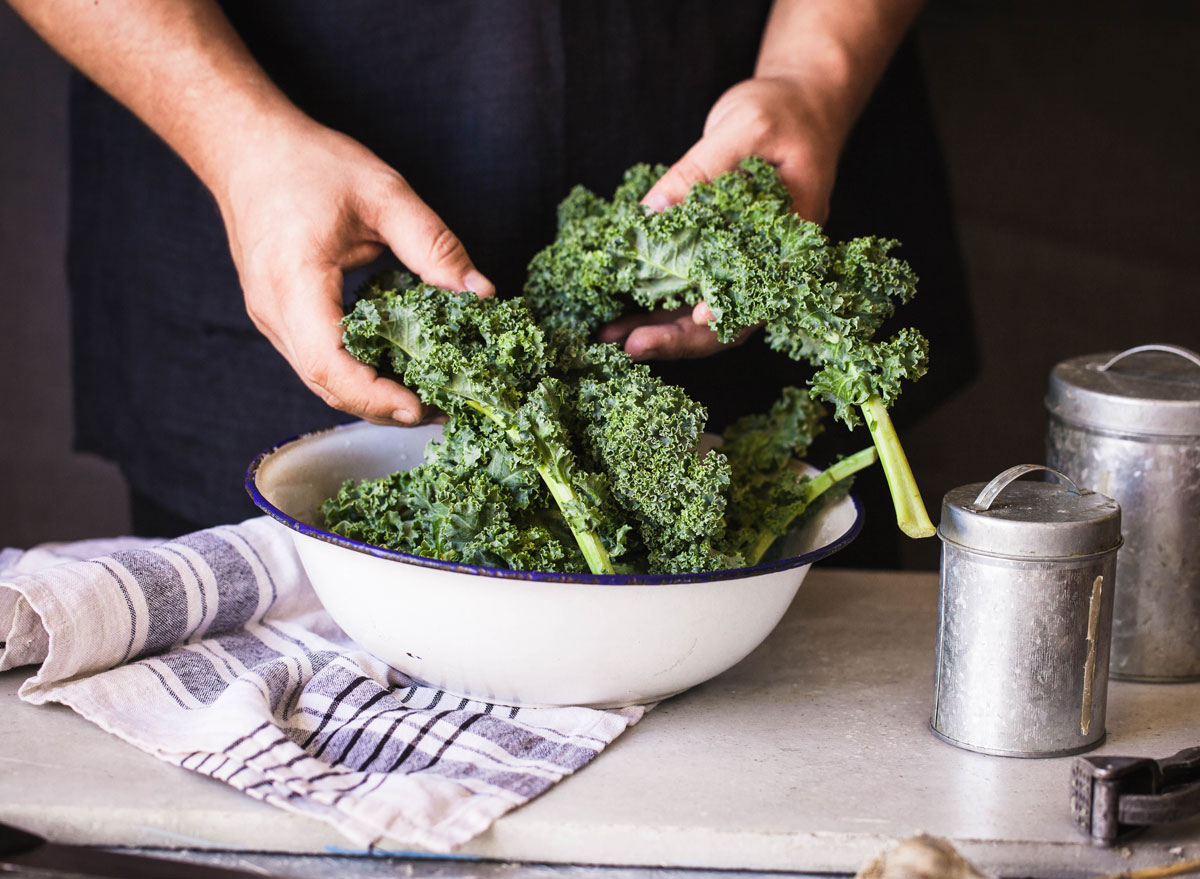
Nutrition Score: 49.07
Out of all the types of lettuce, we bet you'd think that the superfood kale would top the list. Surprisingly, it's closer to the bottom. That being said, there are still benefits of kale. For example, one cup of raw kale contains 200% of your daily value of vitamin A, nearly 700% DV of vitamin K, and 140% of your DV of vitamin C.
Endive
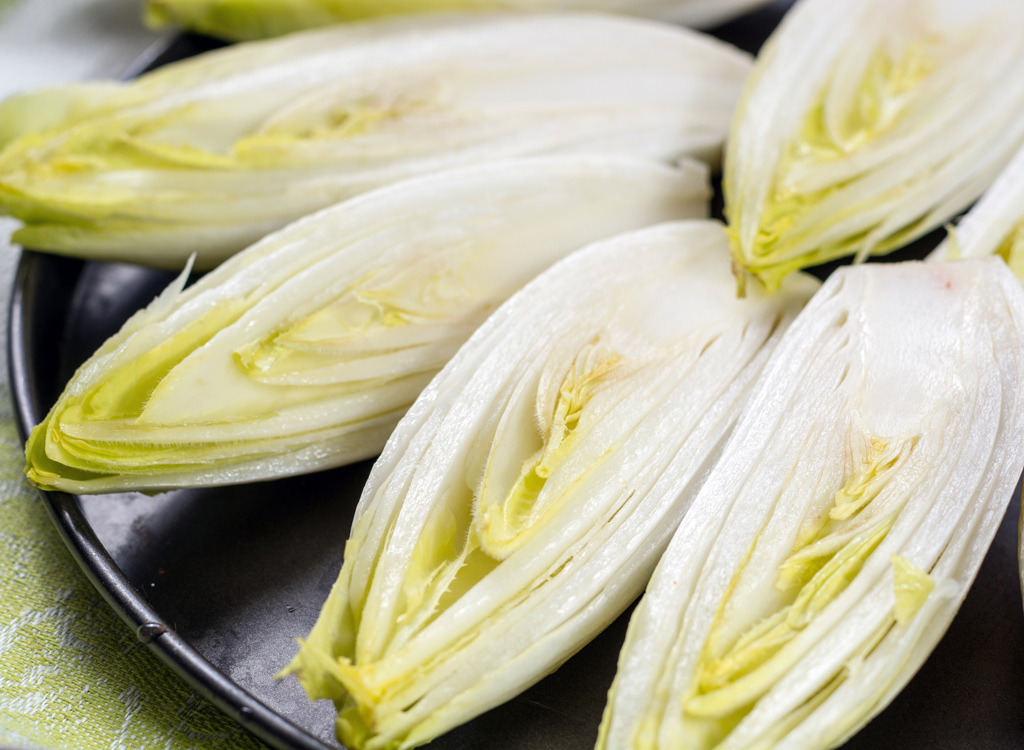
Nutrition Score: 60.44
You've probably seen these types of lettuce grilled or accompanied by blue cheese, walnuts, pears, and gorgonzola. It's because the sturdy lettuce can stand up to these bold flavors (and is literally sturdy enough to hold them in its leaves). While endive belongs to the chicory family, it's distinctly different from common chicory.
Mustard Green
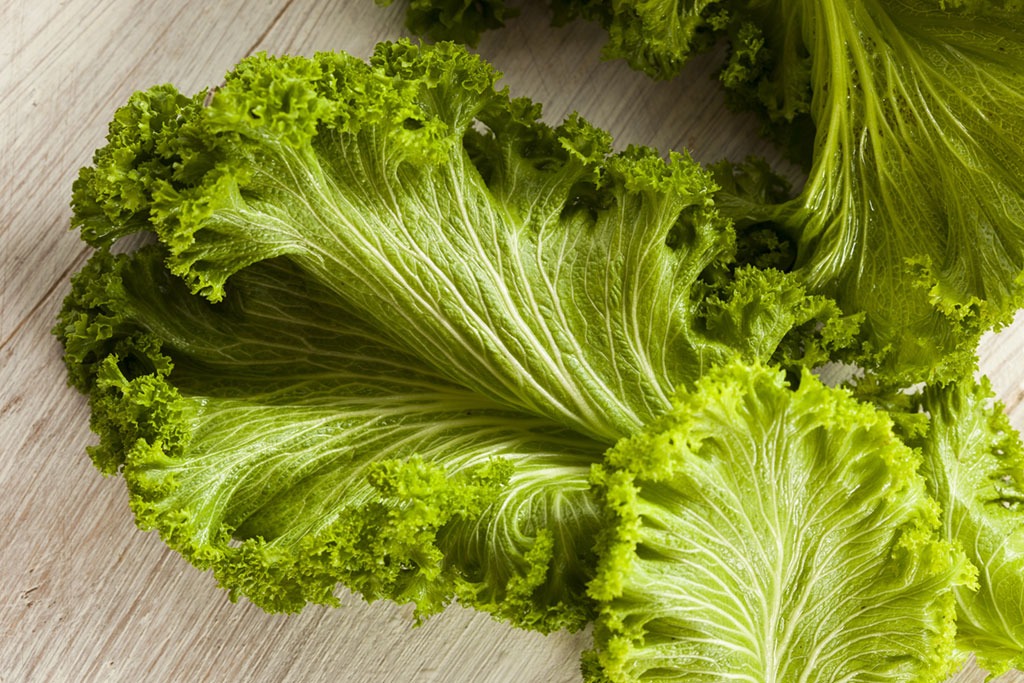
Nutrition Score: 61.39
If you want to add a bit of a spicy kick to your salad or sauteed greens, opt for mustard greens. Mustard greens are a type of lettuce that's a rich source of vitamins A, C, and K. Use these greens like you might spinach, but when you want more of a peppery kick. We recommend sauteing them up with olive oil (or another healthy fat) and a pinch of salt to balance the sharp-tasting bite.
Collard Greens
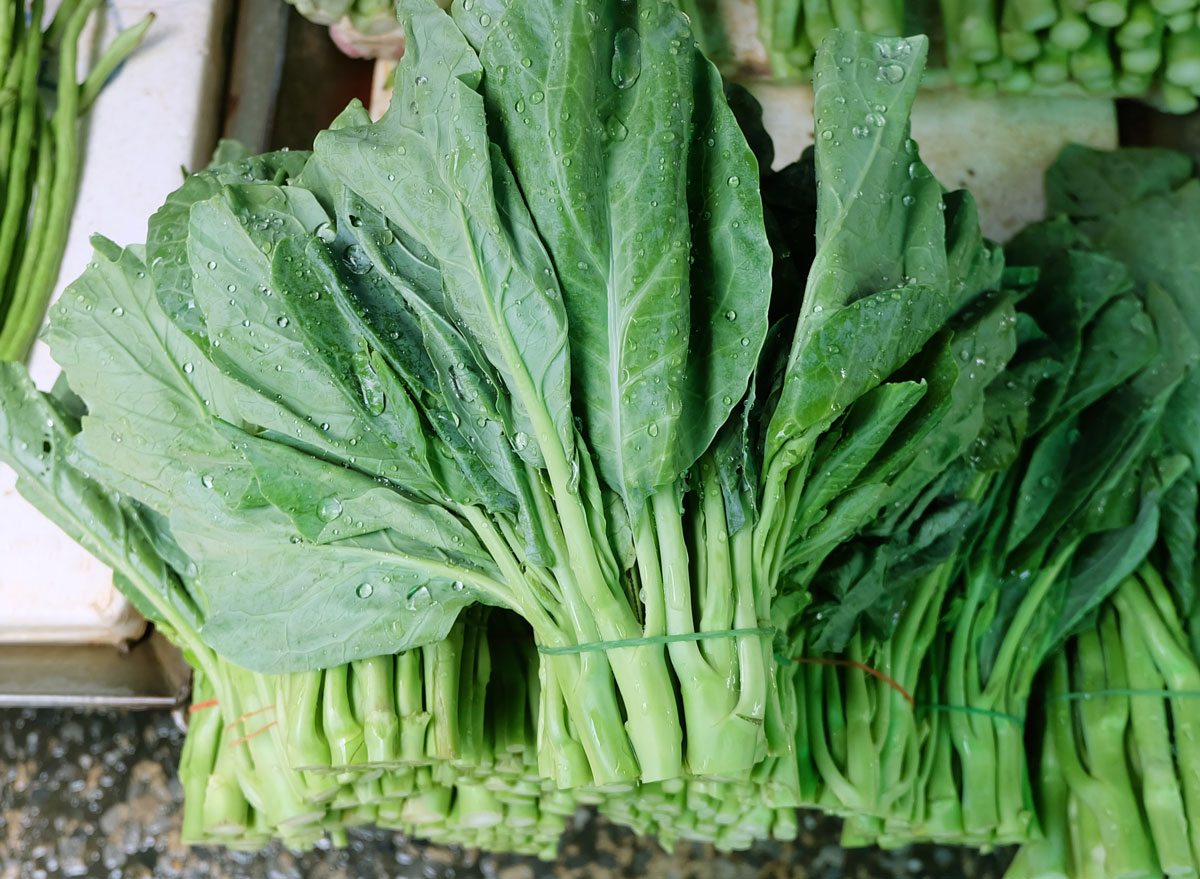
Nutrition Score: 62.49
A staple vegetable of Southern U.S. cuisine, collard greens also boast incredible cholesterol-lowering benefits—especially when steamed. A study published in the journal Nutrition Research compared the effectiveness of the prescription drug Cholestyramine to steamed collards. Incredibly, the collards improved the body's cholesterol-blocking process by 13 percent more than the drug! Of course, that won't do you any good if you insist on serving them with ham hocks…
Parsley
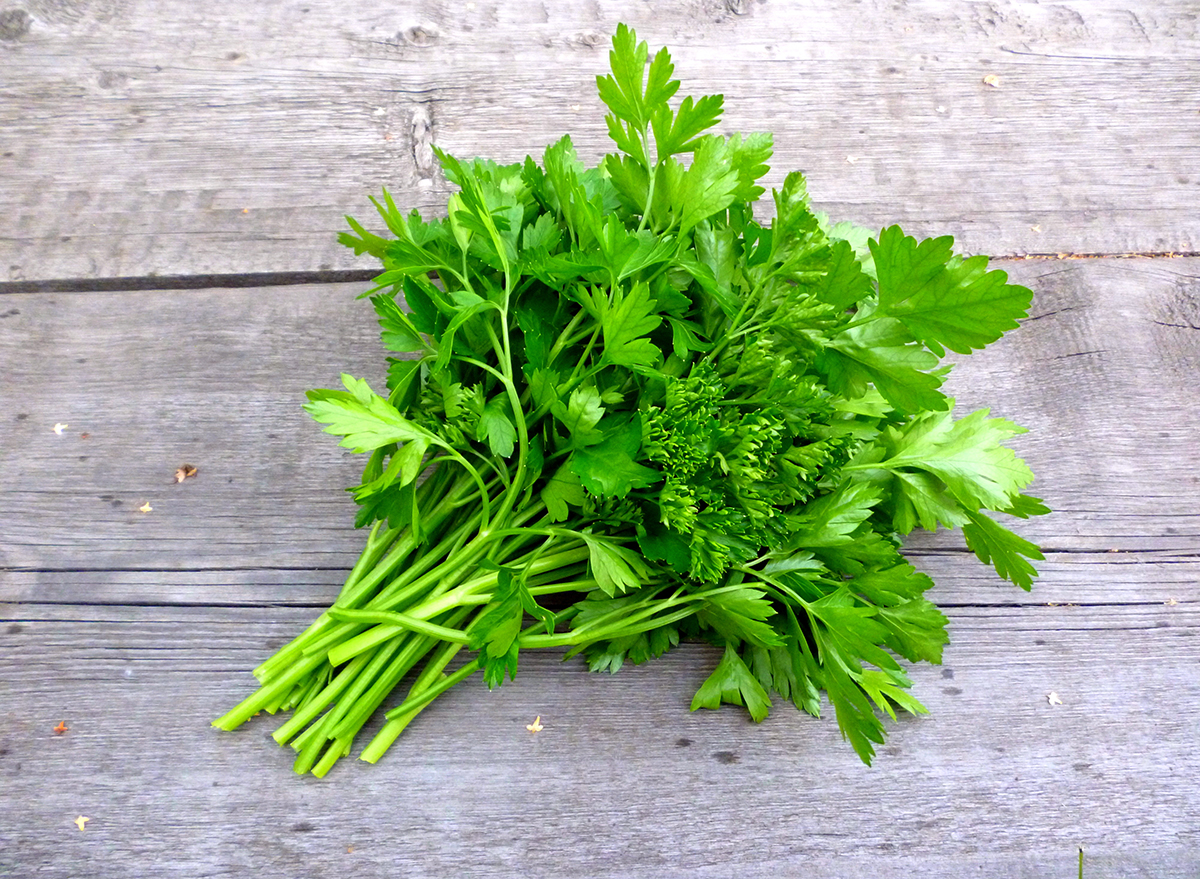
Nutrition Score: 65.59
While not technically lettuce, this leafy garnish that sits on the side of your plate is a quiet superfood. It's so packed with nutrients that even that one sprig can go a long way toward meeting your daily requirement for vitamin K. Moreover, research suggests the summer-y aroma and flavor of chopped parsley may help control your appetite. A study in the journal Flavour found participants ate significantly less of a dish that smelled strongly of spice than a mildly scented version of the same food. Adding herbs, like parsley, creates the sensory illusion that you're indulging in something rich—without adding any fat or calories to your plate.
Leaf Lettuce
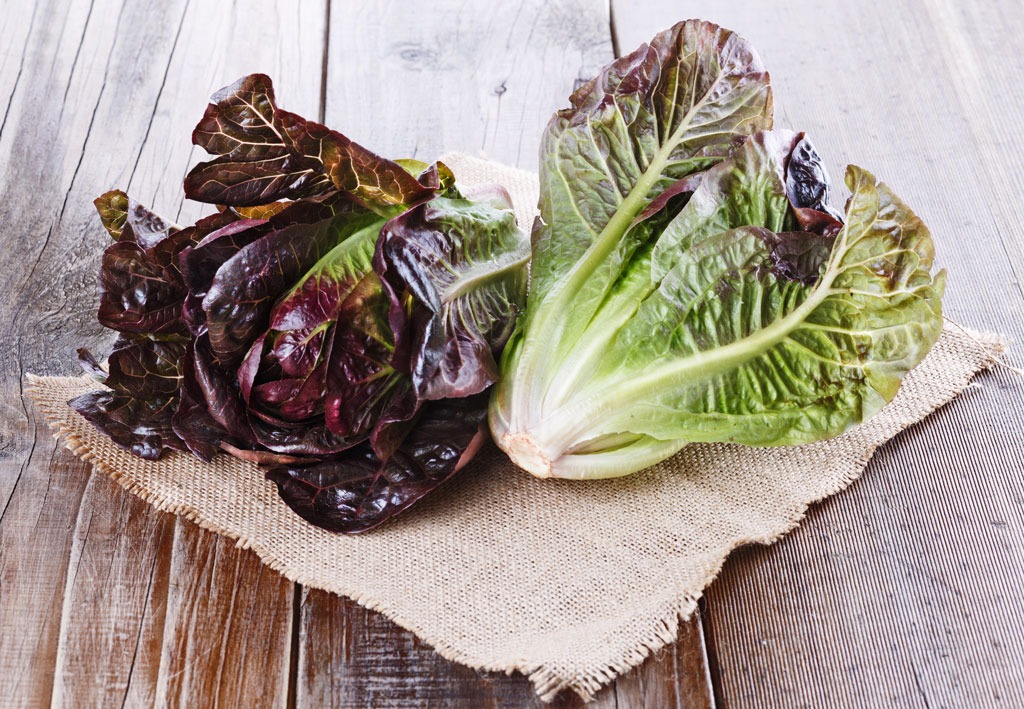
Nutrition Score: 70.73
The nutritional Clark Kent of the salad bar, this common and unsuspecting leafy green is ready to take its place among the superfoods for weight loss. Two generous cups of lettuce provide 100 percent of your daily vitamin K requirement for strong, healthy bones. A report from the Nurses' Health Study suggests that women who eat a serving of lettuce every day cut the risk of hip fracture by 30 percent than when compared with eating just one serving a week.
Romaine Lettuce
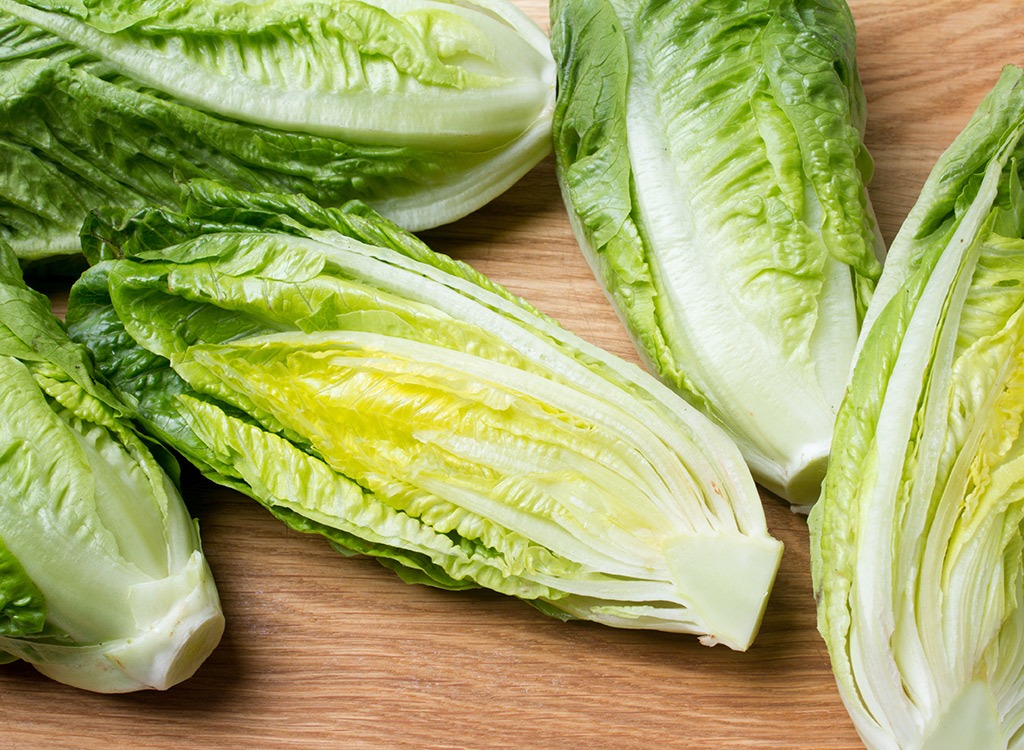
Nutrition Score: 63.48
Even more so than its cousin kale, the humble Romaine lettuce packs high levels of folic acid, a water-soluble form of Vitamin B that's proven to boost male fertility. A study published in the journal Fertility and Sterility found supplemental folic acid to significantly increase sperm counts. Get the man in your life to start craving Caesar salads, and you may soon have a baby Julius on board. (Ladies, this green packs health benefits for you, too! Folate also plays a role in battling depression, so change out your kale for Romaine.
Chicory
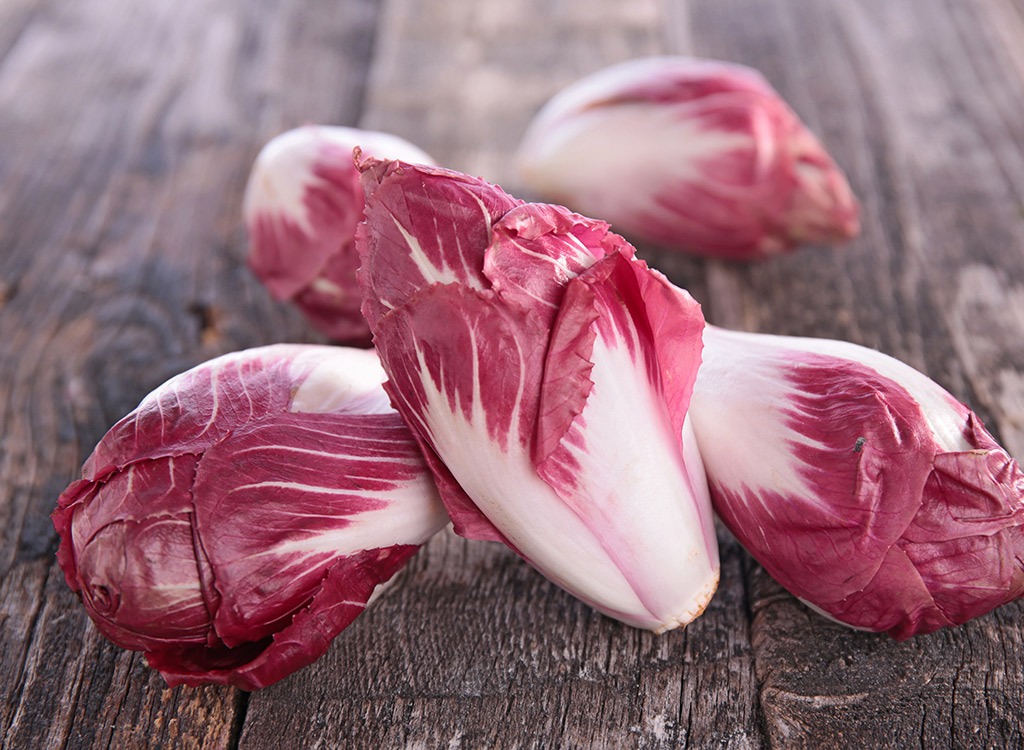
Nutrition Score: 73.36
Chicory is a family of bitter greens, but its most well-known member is radicchio, the small red or purple leaf that comes in a head about the size of a softball. It's one of the best dietary sources of polyphenols—powerful micronutrients that serve a role in preventing disease. A study in the Journal of Nutrition found that people who consume 650 milligrams a day of polyphenols have a 30 percent chance of living longer than those who consume less than that. A cup of chicory leaves clocks in at about 235 milligrams, so consider adding a little leafy red into your leafy greens.
Spinach
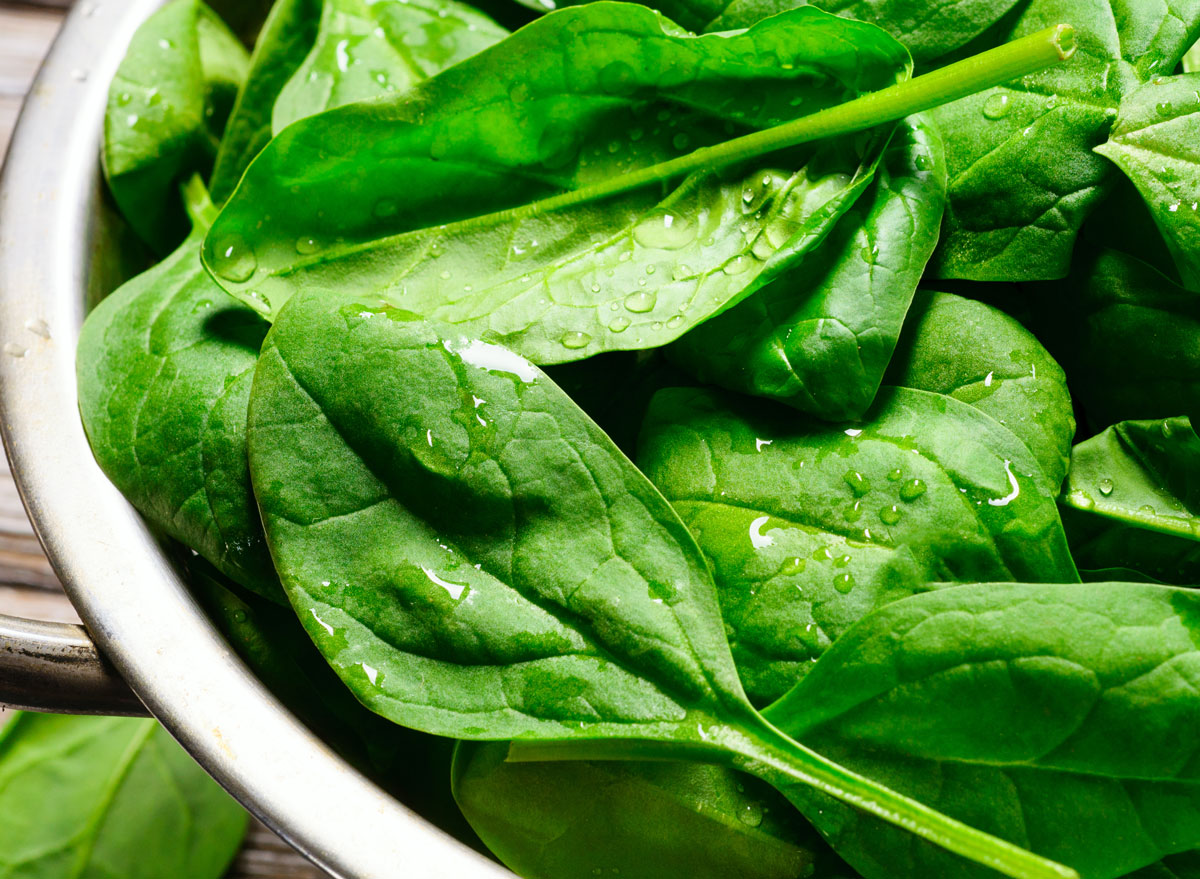
Nutrition Score: 86.43
According to the United States Department of Agriculture, a 180-gram serving of boiled spinach provides 6.43 milligrams of iron, the muscle mineral—that's more than a 6-ounce hamburger patty! Recent research also suggests compounds in the leaf membranes called thylakoids may serve as a powerful appetite suppressant. A long-term study at Lund University in Sweden found that having a drink containing thylakoids before breakfast could significantly reduce hunger (by 95 percent!) and promote weight loss. On average, the women who took the extract lost 5.5 pounds more than the placebo group over the course of three months.
Beet Greens
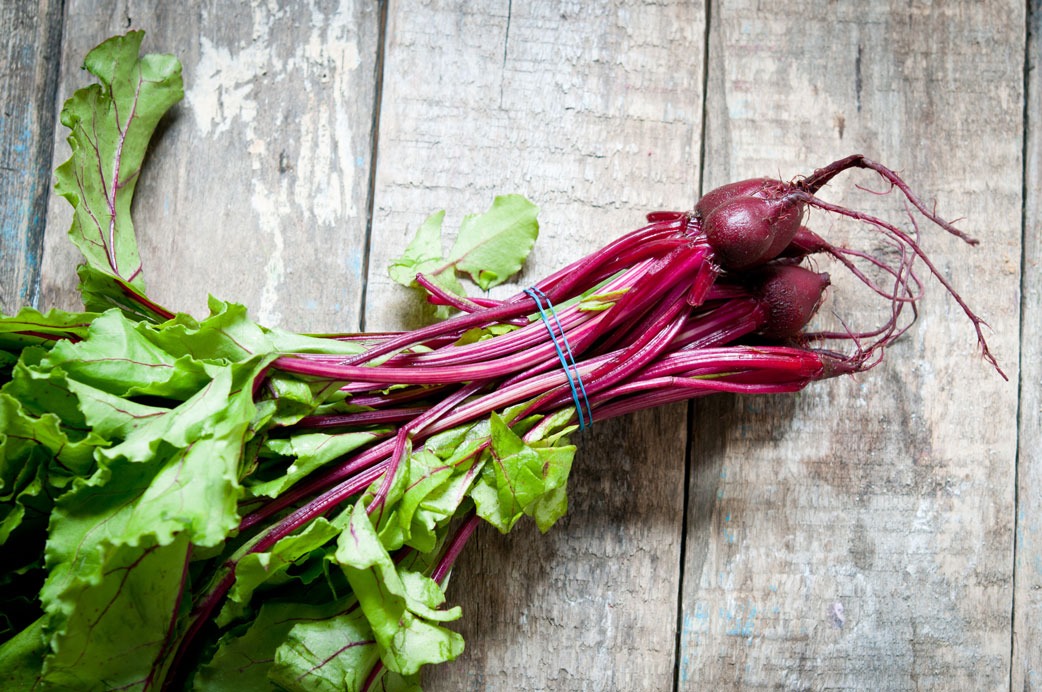
Nutrition Score: 87.08
Yes, the stuff they cut off and throw in the garbage before charging you an arm and a leg for "beet salad" is actually one of the best leafy greens. A scant cup of the bitter green serves up nearly 5 grams of fiber—that's more than you'll find in a bowl of Quaker oats! Researchers at the University of Leeds found that risk of cardiovascular disease was significantly lower for every 7 grams of fiber consumed. Try them in stir fries and eat to your heart's content!
Chard
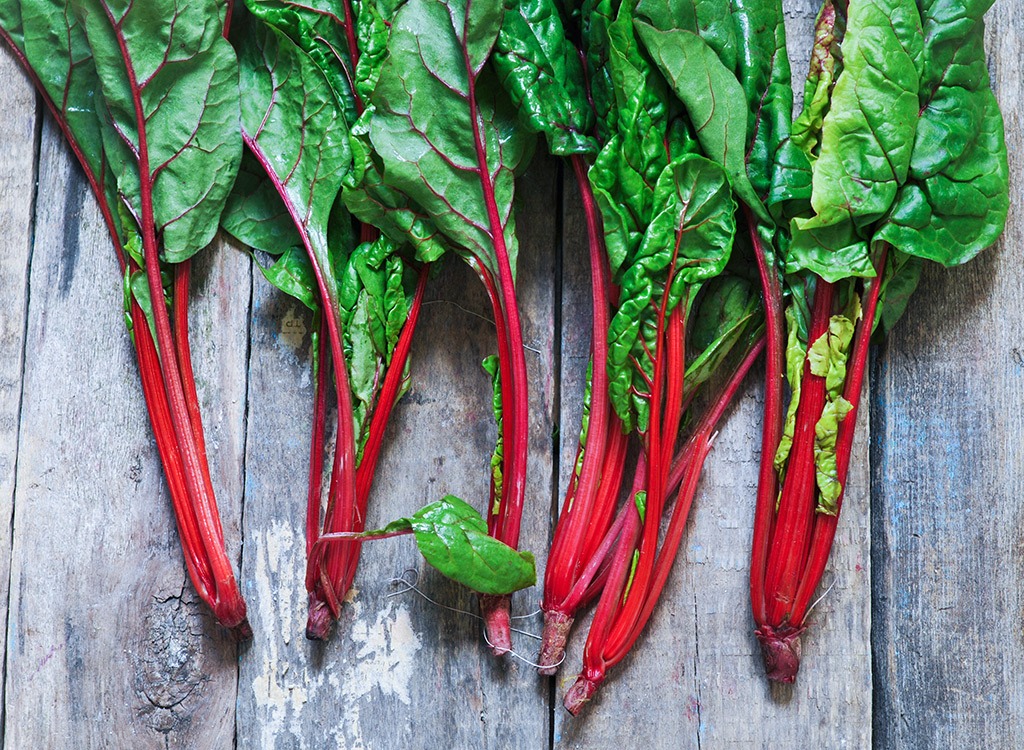
Nutrition Score: 89.27
Chard. Sounds like "burnt." It's not as fun a name to drop as, say, "broccolini," but it might be your best defense against diabetes. Recent research has shown that these leafy greens contain at least 13 different polyphenol antioxidants, including anthocyanins—anti-inflammatory compounds that could offer protection from type 2 diabetes. Researchers from the University of East Anglia analyzed questionnaires and blood samples of about 2,000 people and found that those with the highest dietary intakes of anthocyanins had lower insulin resistance and better blood glucose regulation.
Chinese Cabbage
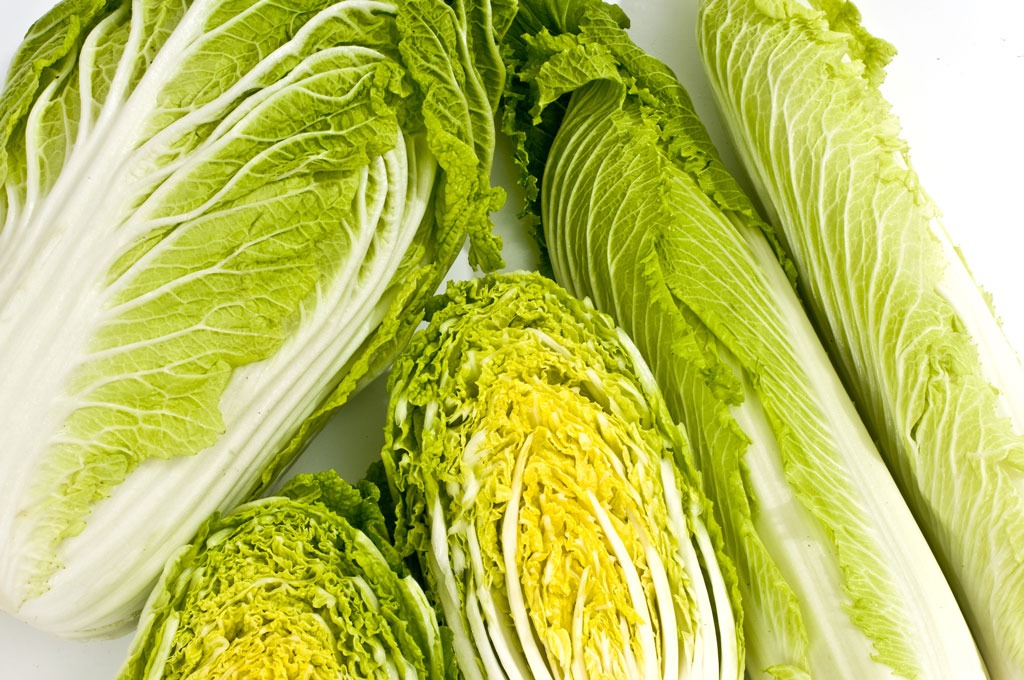
Nutrition Score: 91.99
Taking the silver medal in the best leafy greens challenge is Chinese cabbage, also called Napa or celery cabbage. Rich sources of highly available calcium and iron, cruciferous vegetables like the cabbage have the powerful ability to "turn off" inflammation markers thought to promote heart disease. In a study of more than 1,000 Chinese women, published in the Journal of the Academy of Nutrition and Dietetics, those who ate the most cruciferous vegetables (about 1.5 cups per day) had 13 percent less inflammation than those who ate the least.
Best Lettuce: Watercress

Nutrition Score: 100
The best green to eat is watercress, which may be the closest thing yet to an anti-aging food. Gram for gram this mild-tasting and flowery-looking green contains four times more beta carotene than an apple and a whopping 238 percent of your daily recommended dose of vitamin K per 100 grams—two compounds that keep skin dewy and youthful.
The healthy green is also the richest dietary source of PEITC (phenylethyl isothiocyanate), which research suggests can fight cancer. Results from an eight-week trial published in the American Journal of Clinical Nutrition suggest daily supplementation of 85 grams of raw watercress (that's about two cups) could reduce DNA damage linked to cancer by 17 percent. Exposure to heat may inactivate PEITC, so it's best to enjoy watercress raw in salads, cold-pressed juices, and sandwiches.